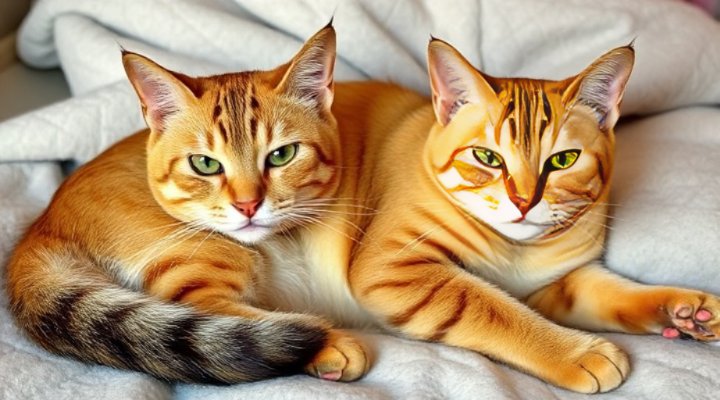Raw cat food is a diet consisting of uncooked meat, bones, and organs, designed to mimic a cat’s natural diet. This article explores the benefits, risks, and how to choose the best raw cat food for your feline friend. From understanding the nutritional needs to selecting high-quality ingredients, we cover everything you need to know to make an informed decision.

What is Raw Cat Food?
Raw cat food, as the name suggests, is uncooked meat, bones, and organs that are meant to replicate what cats would eat in the wild. In other words, it’s a biologically appropriate diet for your feline companion. For instance, wild cats consume prey like birds and rodents, which provide them with essential nutrients. Similarly, raw cat food aims to deliver these nutrients in a convenient form for domestic cats.
Above all, raw cat food is rich in protein, which is crucial for your cat’s muscle development and overall health. Most importantly, it avoids the fillers and artificial additives often found in commercial cat food. That said, it’s essential to ensure the diet is balanced and meets all your cat’s nutritional needs.

Benefits of Raw Cat Food
There are several advantages to feeding your cat a raw diet. Firstly, it can lead to a shinier coat and healthier skin. Moreover, many cat owners report improved digestion and reduced stool odor. For example, my own cat, Whiskers, had digestive issues until I switched her to a raw diet. Subsequently, her problems vanished, and she became more energetic.
Additionally, raw cat food can help maintain a healthy weight. Unlike processed foods, which often contain excessive carbohydrates, raw food is high in protein and low in carbs. Consequently, it can prevent obesity and related health issues. Likewise, it may reduce the risk of dental problems, as chewing raw meat and bones can help clean your cat’s teeth naturally.

How to Choose the Best Raw Cat Food
Selecting the right raw cat food involves several factors. Firstly, look for high-quality ingredients. The meat should be fresh and sourced from reputable suppliers. Furthermore, ensure the diet includes a balance of muscle meat, organs, and bones. For instance, a good ratio is 80% muscle meat, 10% organs, and 10% bones.
Secondly, consider whether to prepare the food at home or buy commercially prepared raw food. While homemade allows for complete control over ingredients, it requires careful planning to ensure nutritional balance. On the other hand, commercial raw food is convenient and often formulated to meet all dietary needs. However, always check the label for quality and avoid products with unnecessary additives.
Lastly, consult your veterinarian before making any dietary changes. They can provide personalized advice based on your cat’s health and nutritional requirements. For more tips on cat nutrition, check out our guide on Best Cat Food.

Potential Risks and How to Mitigate Them
While raw cat food has many benefits, it’s not without risks. For example, raw meat can carry bacteria like Salmonella, which can be harmful to both cats and humans. Therefore, proper handling and hygiene are crucial. Always wash your hands and surfaces thoroughly after preparing raw food.
Another concern is nutritional imbalance. Without proper knowledge, homemade raw diets may lack essential nutrients. To clarify, cats require taurine, an amino acid found in meat, which is vital for heart and eye health. Consequently, it’s important to follow a balanced recipe or choose a commercially prepared diet that meets AAFCO standards.
For authoritative information on pet nutrition, visit the FDA’s pet food guidelines.
Transitioning Your Cat to a Raw Diet
Switching your cat to raw food should be done gradually. Start by mixing small amounts of raw food with their current diet. Over time, increase the proportion of raw food while decreasing the old food. This gradual transition helps prevent digestive upset.
Meanwhile, observe your cat’s reaction. Some cats may take to the new diet immediately, while others may need more time. If your cat is hesitant, try offering different types of meat to find their preference. Remember, patience is key during this process.
For more advice on transitioning diets, see our article on Best Cat Food.
Conclusion
In conclusion, raw cat food can be a healthy and natural option for your feline friend. By understanding the benefits, risks, and how to choose the best products, you can make an informed decision that supports your cat’s health and well-being. Always consult your vet and prioritize high-quality ingredients to ensure a balanced diet.
For further reading, explore our guide on Best Cat Food or visit the AVMA’s FAQ on raw pet foods.
Related Keywords: raw cat food, cat nutrition, best cat food, natural cat diet, uncooked meat for cats
